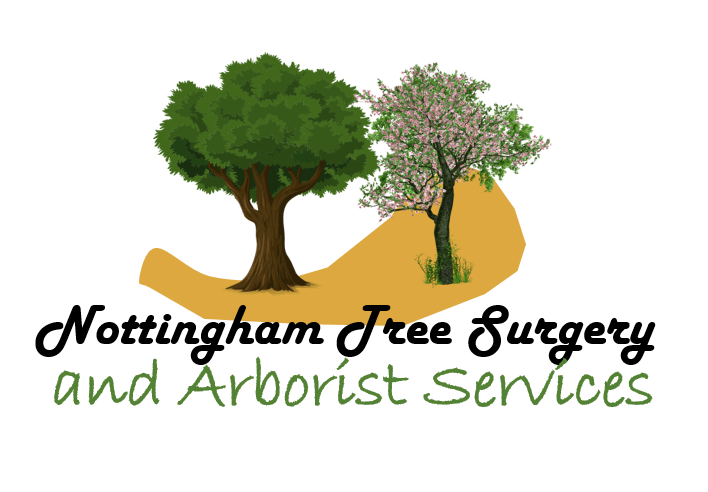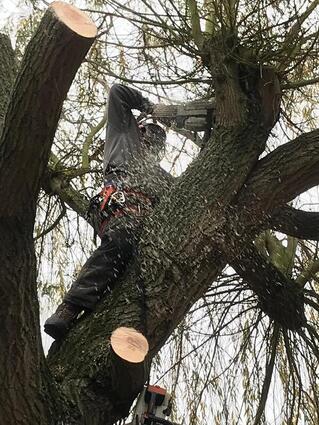Deadwood Removal Service
Our deadwooding service in Nottingham provides homeowners with a cost-efficient and safe way to get rid of trees that are no longer needed or deemed hazardous. We provide the necessary equipment, expertise, and labour to safely remove dead wood from trees, leaving your property looking healthy and more aesthetically pleasing.
Deadwooding is an important part of proper tree maintenance, as it can prevent diseases from spreading through the tree and eliminate potential safety hazards caused by weakened branches that could potentially snap off during a storm. Our team of experienced arborists will assess each situation carefully before carrying out any deadwooding work, ensuring your tree is properly maintained while keeping you safe.
We also provide our customers with advice on how best to care for their trees and advise when deadwooding should be done. We are experts in this field, so you can trust that we'll provide you with the best possible advice. Our customer service is second to none – we make sure that your experience is as stress-free as possible and that any work carried out meets the highest standards of safety and professionalism.
For all your deadwooding services in Nottingham, contact us today! We look forward to helping keep your property's trees looking their best.
What is Deadwooding
Deadwooding is a process of pruning trees and removing dead, dying, or diseased branches in order to maintain the health and vigour of the tree. Doing so helps reduce the risk of pests and disease spreading among other trees. Deadwooding also improves growing conditions for healthy shoots and encourages new foliage growth. It can be done with hand tools such as saws, shears, and loppers or through mechanical methods like bracing or cabling. Beforehand, it is important to consult an arborist to assess whether a tree should be pruned or not, as well as where exactly to make cuts depending on its condition. Additionally, proper technique must also be taken into account when performing this process – improper pruning can lead to improper healing, causing further damage to the tree in the long run. With proper care and maintenance, deadwooding can be a useful tool for preserving healthy trees and preventing them from becoming potential hazards.
What are the Benefits of Deadwooding
Deadwooding helps to reduce overcrowding and improve the overall health of trees. It encourages new growth by eliminating weak, diseased, or overly dense branches that can impede the natural flow of air and light through a tree’s canopy. Deadwooding also improves the shape and structure of trees, making them more aesthetically pleasing.
Removing dead wood from a tree before it becomes too far gone, reduces the risk of an infestation spreading to healthy branches or even other nearby trees. Additionally, Deadwooding can help make a tree safer for people who use its environment since it removes potential hazards like broken limbs or hanging debris that could fall on unsuspecting passersby. Furthermore, deadwooding may be advantageous in terms of fire safety. By removing parts of a tree that are more likely to catch fire, the risk of damage or injury is minimised.
Finally, deadwooding helps maintain healthy trees by allowing them to produce new growth and vigor that can help strengthen weak sections of a tree’s canopy. All these benefits make Deadwooding an important tool for keeping trees healthy and safe.
Overall, Deadwooding helps ensure the health and safety of both people and trees in many ways. It improves the appearance of trees while also reducing their risk for infection or infestation from pests or diseases. Additionally, Deadwooding minimises fire risks by removing branches or debris that may easily ignite. Finally, it supports healthy new growth on weakened branches so that the tree can thrive and become stronger. Deadwooding is a beneficial practice for many reasons, and it should be part of any comprehensive tree care plan.
Does lots of deadwood present in my tree mean that the tree is sick?
No, having deadwood in a tree does not necessarily mean that the tree is sick. Deadwood can accumulate naturally over time and often has little impact on the health of a tree. Keep in mind that many trees have adapted to living with deadwood present. In some cases, such as with mature oak trees, deadwood may even be beneficial to their survival.
However, if the amount of deadwood in your tree exceeds what would be considered normal for its species or if it's accompanied by other signs of distress (such as dieback or abnormal leaf growth), you should contact an arborist for further assessment and advice about how best to proceed. An arborist can evaluate whether there are any underlying problems that need to be addressed and make recommendations as to how to treat the tree. In some cases, removing excessive deadwood may be necessary to restore the health of your tree.
Ultimately, while deadwood is not always a cause for concern, it is important to pay attention to changes in your tree's appearance and overall health over time so that you can take corrective action if needed. Keeping an eye on your trees will allow you to identify any potential issues early on, helping them remain healthy and beautiful.
When you deadwood a tree, how much do you remove?
When deadwooding a tree, it is important to only remove what is necessary. Generally speaking, the average amount of deadwood that should be removed from a tree during deadwooding is around 15-20%. This will ensure that your tree has enough foliage to remain healthy and vigorous, but also that any unhealthy or hazardous branches are taken care of. In some cases, more than 20% may be needed if the tree has extensive decay or large areas of dead wood.
It is always advised to consult a
certified arborist before making decisions about how much deadwood to remove from your trees. Doing so will help you determine an appropriate amount for maximum health and safety benefits. Additionally, when removing too much deadwood can weaken trees and put them at greater risk of falling over or breaking. Therefore, it is important to ensure that only the necessary amount is removed so as not to cause any further harm to the tree. Knowing exactly how much deadwood to remove can help protect your trees and provide long-term benefits for their health and safety.
It is easy to become overwhelmed when trying to decide how much deadwood should be taken from a tree. When in doubt, it is always best practice to call a certified arborist who can assess the tree's condition and recommend an appropriate removal rate based on its individual circumstance. With their expertise, they can help you make sure that you are making the right decision regarding deadwooding and preserving the health of your tree in the long run.
Back to Homepage



